Pictures of Case When a Pup
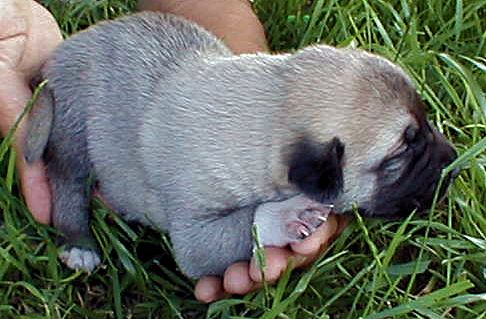

Case (at four days on left and two weeks on right) was born born and raised in the pasture with goats!
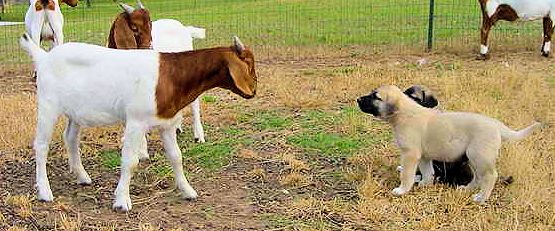
Puppy Case at one month was already good with goats.
He was showing a decided preference to being with the goats rather than being with the other pups!
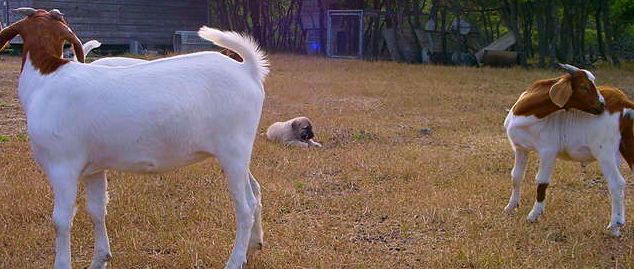
Puppy Case at one month was already good with goats.
He was showing a decided preference to being with the goats rather than being with the other pups!
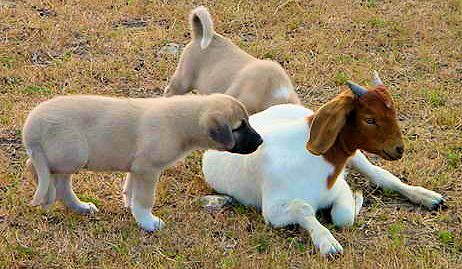
Puppy Case litter mate carefully approach a young kid.
Even at a month Case and others in his litter knew the correct demeanor to successfully approach skittish young goats!
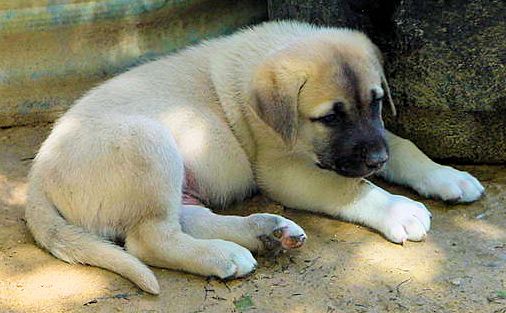
Case was always incredibly beautiful.
Even laying down in the dirt by the horse trough, Case's beauty caught my eye!
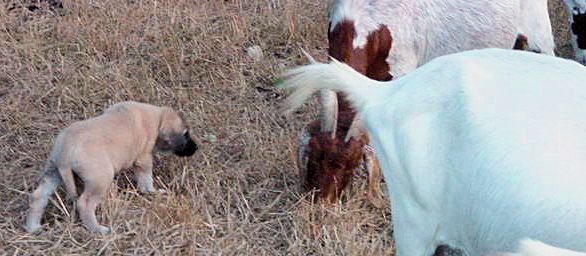
Case always demonstrated correct livestock guardian demeanors.
Look how skillfully he could walk near the dominant and bossy nannys without disturbing them, even at five weeks!
He isn't the least bit afraid of the goat but knows that by moving slowly and keeping his head and tail down, she won't become alarmed.
This is why I am disgusted by judges who admonish handlers to train their show Anatolians to keep their heads up.
The head down position is one of the most important traits an Anatolian can demonstrate to keep their flock comfortable!
A knowledgeable breeder won't be intimidated by a ridiculous comment by a show judge with no real world experience with Anatolians.
Why would I ever select against a trait that I know is essential in good working behavior for a flock guardian?
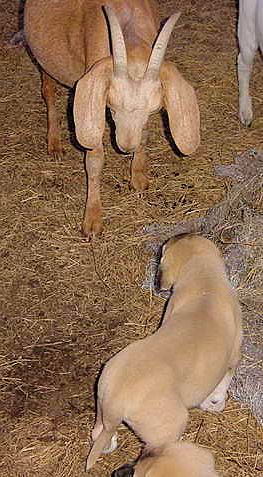
Like good working Anatolians should, Case becomes very still in response to a goat cocking her head warningly.
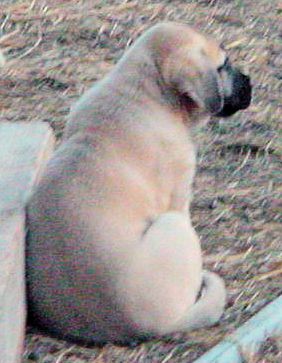
Case sits quietly at peace amid the goats.
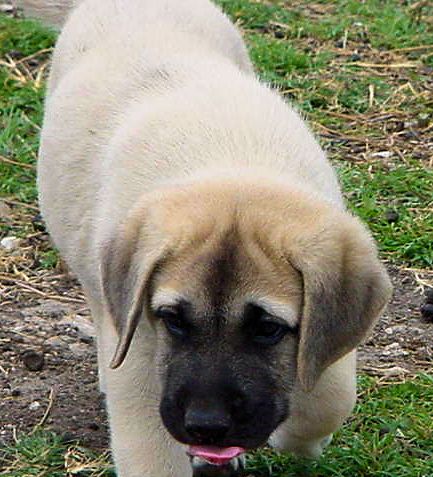
Case has always had a strong muzzle and great under-eye fill.
Notice Case's air lick! He doesn't actually lick anyone, but he frequently shows his approval by giving a quick air lick!
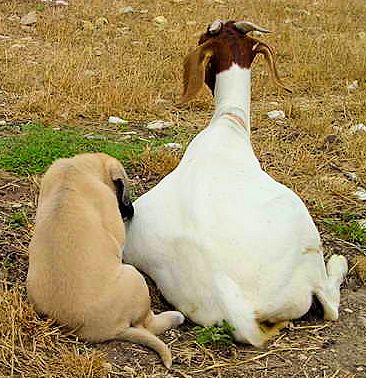
Case loves resting with his goat friends.
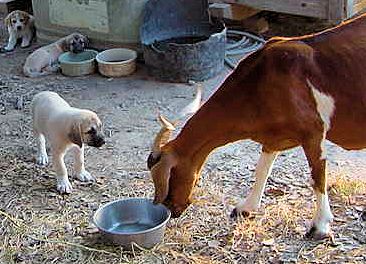
Case greeting a dominant old nanny.
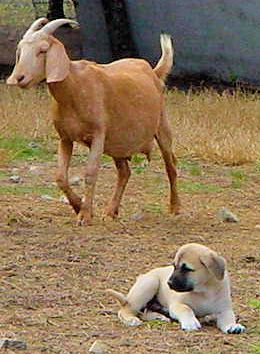
Case lived full time with goats his entire life.
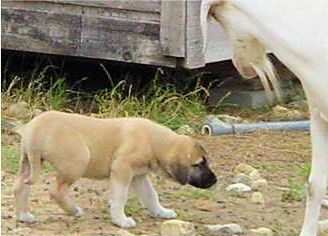
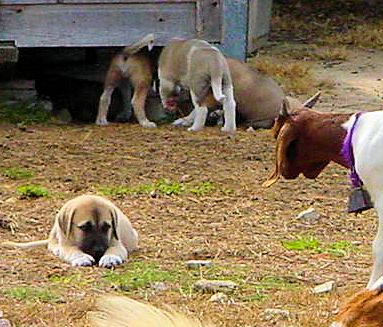
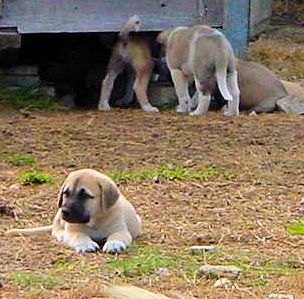
Case walking carefully under critical goat observation.
Case has decided to lay down and show submissive respect.
Case relaxes after the goats are satisfied and move on.
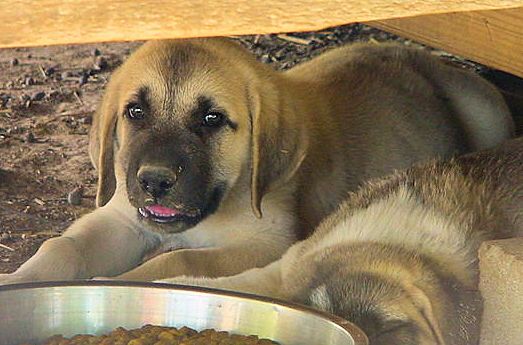
Case relaxing in his "cave" with one of his friends.
I recommend the pups always have a location to get away from all the other animals.
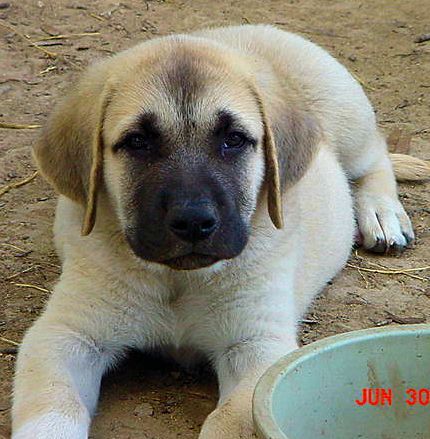
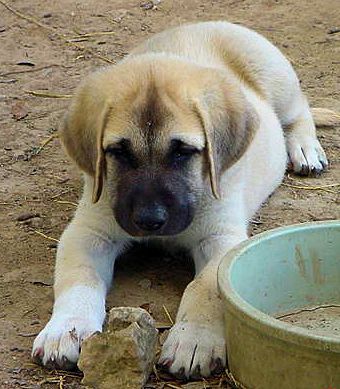
Case relaxing and looking beautiful.
He seems mighty interested in that rock.

Case cooling off in the mud on July 6, 2001.

Case calmly checking out Whitey's mood on July 12, 2001. Whitey was the dominant goat in the herd at the time.
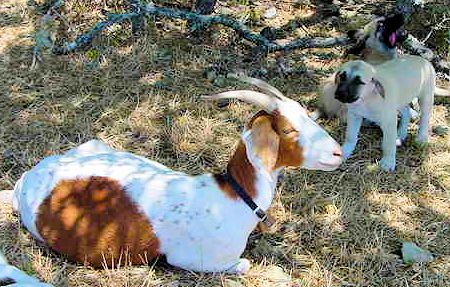
Case always paid attention to his goats, here on July 13, 2001.
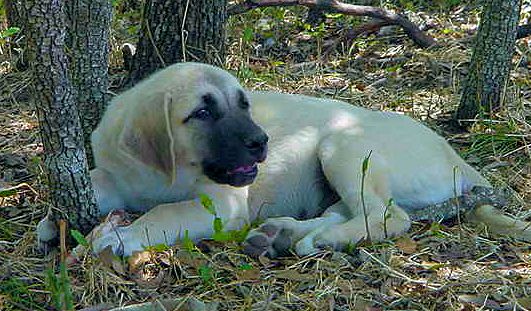
Case in the shade with his bone on July 15, 2001.
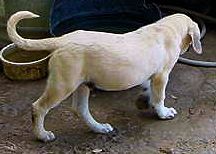
Case, pictured here on July 19, 2001, always had great front and rear angulation.
Notice that he also has excellent length of upper arm, which is necessary for for a dog to have a beautiful flowing trot.
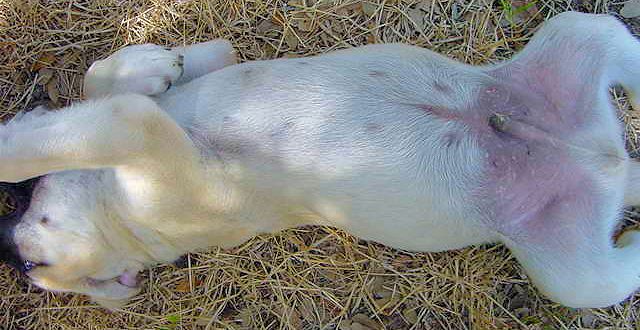
Doesn't this picture, taken on July 19, 2001, make you want to rub Case's fat belly?
Case always had (and has) the sweetest, most loving temperament toward me.
Even though as a pup he was the smallest male in the litter, he quietly was the top boss.
Interestingly, Case has white only on his toes and none elsewhere.
At six months he weighed 87 pounds (the smallest male) and the largest male weighed 101.
At two years, however, when I had their OFA done, Case weighed 128 and the formerly largest male also weighed exactly 128!
I have found that I prefer those dogs with the slower growth rates.
As I was once told, "EARLY RIPE, EARLY ROTTEN!"
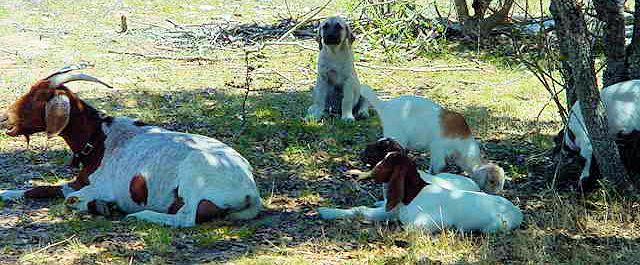
Case, pictured here on July 22, 2001, sitting in the shade with his goats.
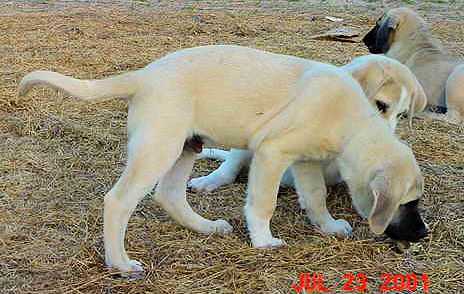
Case, pictured here on July 23, 2001, playing keep away with his friend, Sam.

Case, pictured here on July 23, 2001, showing off his excellent rear end.
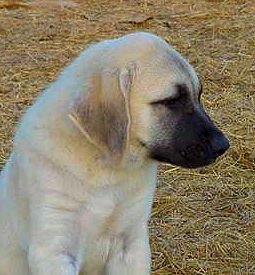
Case, pictured here on July 23, 2001, frequently sits surrounded by stillness.
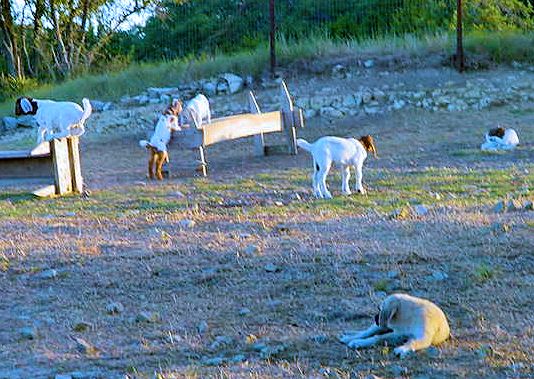
Case, pictured here on July 23, 2001, watching the kids during evening play.
Anatolian pups with superior working ability (who were raised PROPERLY from birth with goats) will only rarely attempt to join kids at play.
These kids all have their mothers nearby. Should one of the pups start playing with a kid, it would run to it's mother, who would most likely knock the pup to the ground!
If the mother DID NOT immediately and harshly correct the pup for playing with the kid, the mother and her kids should IMMEDIATELY be removed from the puppy area!
If a person doesn't IMMEDIATELY remove those goats, THEY are responsible for reinforcing improper behavior in their pup!!!!
DON'T BLAME THE PUP FOR YOUR BAD DECISIONS. AFTER ALL, AREN'T YOU SUPPOSED TO BE THE ONE WITH THE BIG BRAIN?
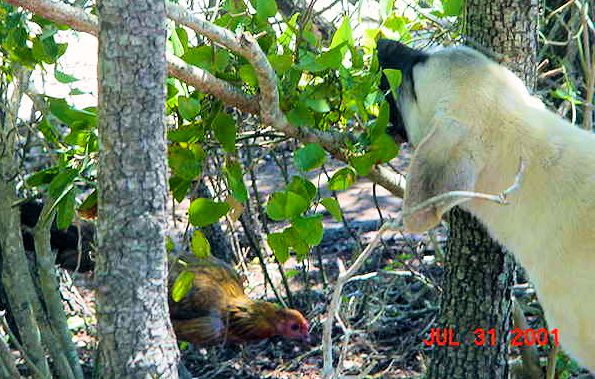
Case, pictured here on July 31, 2001, with chickens while he copies goats eating plants.
When Case saw the goats eating these plants, he decided to try eating them himself. He decided he didn't like them pretty quickly, however!
Besides being raised with goats from birth, Case was also raised with chickens from from a couple of weeks on.
These chickens are rescued game birds and even the hens didn't tolerate any play. They were excellent training chickens... but a bit too mean for me!
I now have ducks, which cannot be placed with pups unless you personally supervise the duck/pup interactions for many months.

Case, on left, pictured here on August 1, 2001, with littermates (left to right) Beau, Kahn, Max, Seven, and Sam.
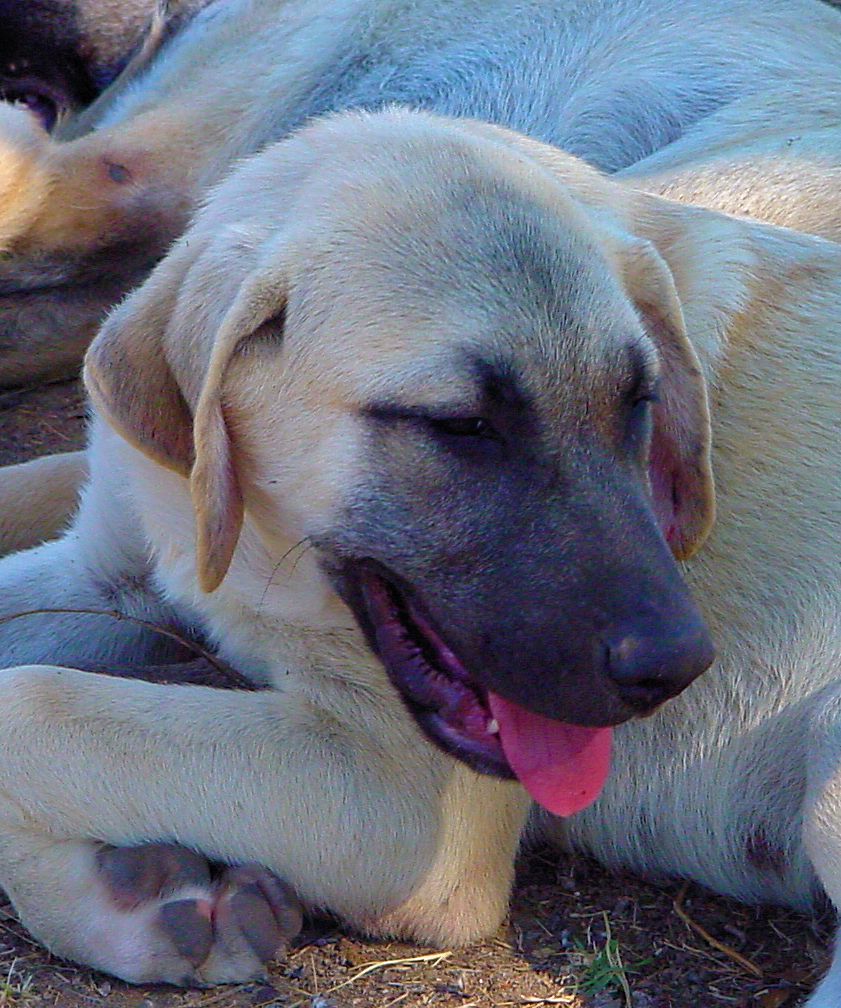
Case, pictured here on August 19, 2001, has always had a magnificent head with his powerful muzzle and great under eye fill.
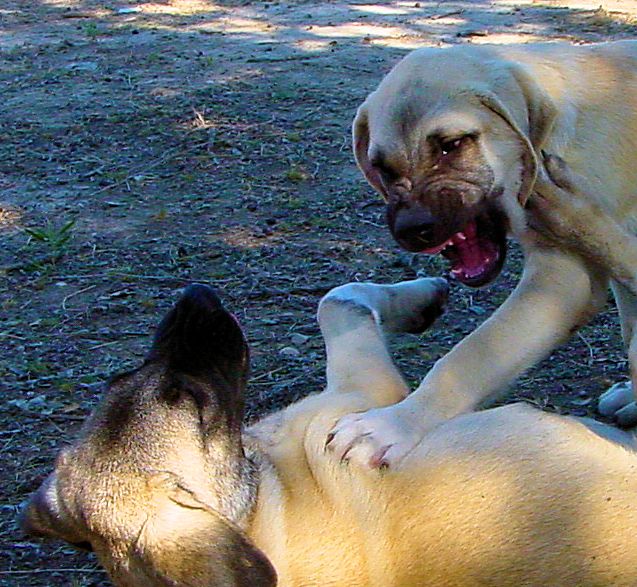
Case, pictured here on August 19, 2001, showing his dominant side.
He generally obtained submission from all the other pups by merely staring at them coldly.
However, when that didn't work he quickly knocked them over and placed a paw on them while snarling.
When they submitted, he let them up and went on about his business.
Never forget, no matter how sweet your Anatolian puppy is, that underneath the sweetness is the ability to control and dominate!
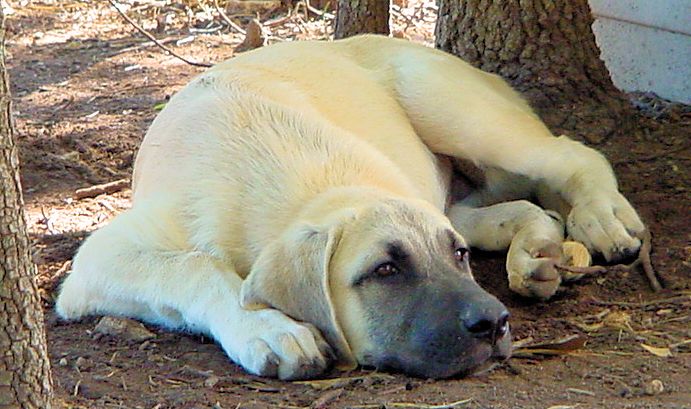
Case, pictured here on August 19, 2001, quickly returns to his laid back self after have once again secured his place as the dominant pup in the litter.
Case is generally so beautiful and so sweet that I frequently forgot the true level of power and control he held in check.
One must always remember the total nature of the Anatolian so one can work toward an Adult Anatolian that behaves properly.
The secret to control is that if you behave in such a way that your dog learns to love and RESPECT you, your dog will be strongly motivated by that love and respect!
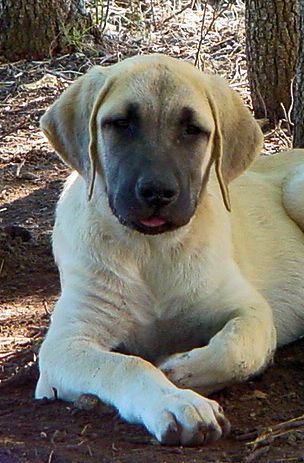
Case, pictured here on August 19, 2001, has great Anatolian head structure.
In order to have the correct triangular head, Anatolians must have great under eye fill.
You can clearly see that Case has excellent under eye fill.
The Standard calls for Anatolians the have "a strong head. ...
Muzzle is blockier and stronger for the dog, but neither dog nor bitch would have a snipey head or muzzle."
Great under eye fill is part of what it takes to avoid a snipey head or muzzle.
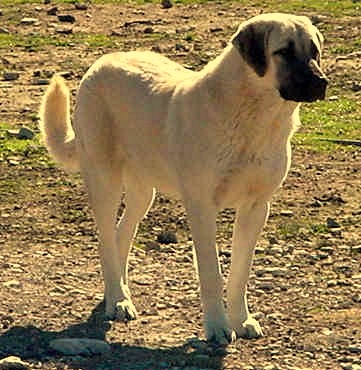
Case was always an exceptionally beautiful Anatolian.
However, his natural guardian ability, temperament, and demeanor was what what caused me to be so excited about him!
Case is pictured here on December 26, 2001 at seven months.
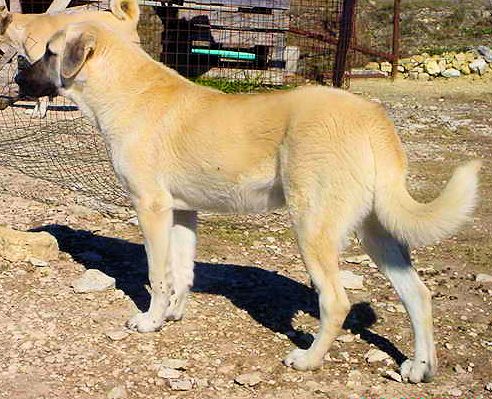
Another view of Case's physical beauty on December 26, 2001 at seven months.

Case shown two days before turning eight months on January 6, 2002.
Even as a puppy he had a well shaped head!
Of course, his behavior with goats has always been second to none!

Case at eleven months on April 6, 2002.
Case's guardian abilities were so incredible I moved him into the big pasture to be one of the guardians there!
As always, he excelled in his guardian duties! And you can see what a beauty he is in the pasture!
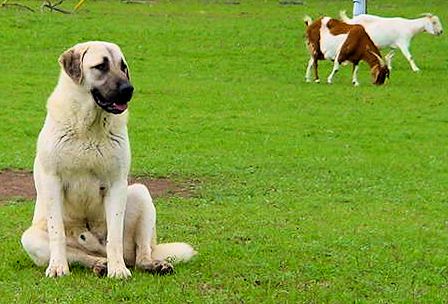
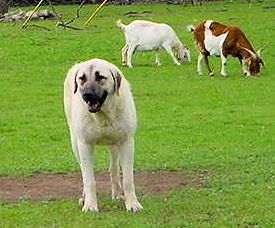
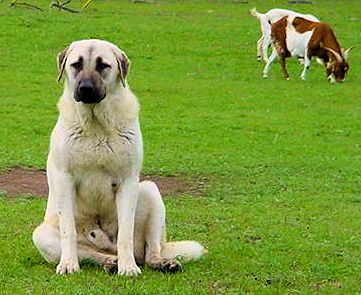
Case at eleven months on April 7, 2002.
Case loves his goats.
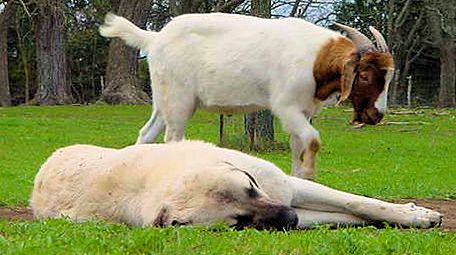
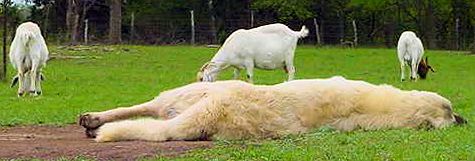
Case at eleven months on April 7, 2002.
As always, he excelled in his guardian duties! It's a tiring job and he knows when it's ok to take the occasional nap!

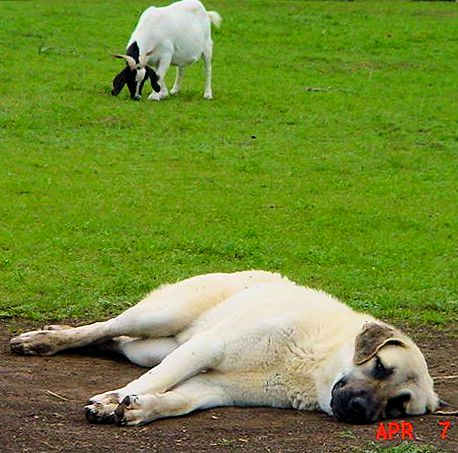
Case at eleven months on April 7, 2002.
A great deal of a livestock guardian's time is spent resting near the goats.
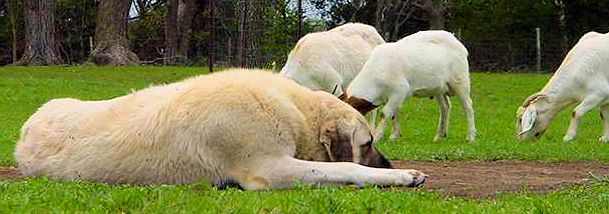
Case at eleven months on April 7, 2002.
Case loves his goats and they love being near him.
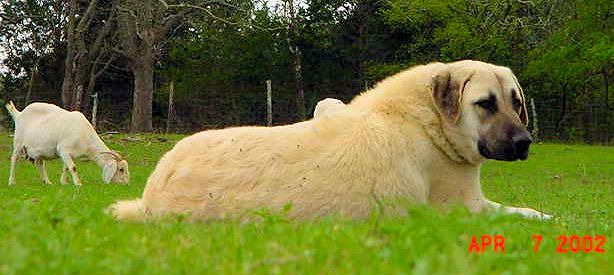
Case at eleven months on April 7, 2002.
The second Case hears of smells something that concerns him, he is instantly alert.
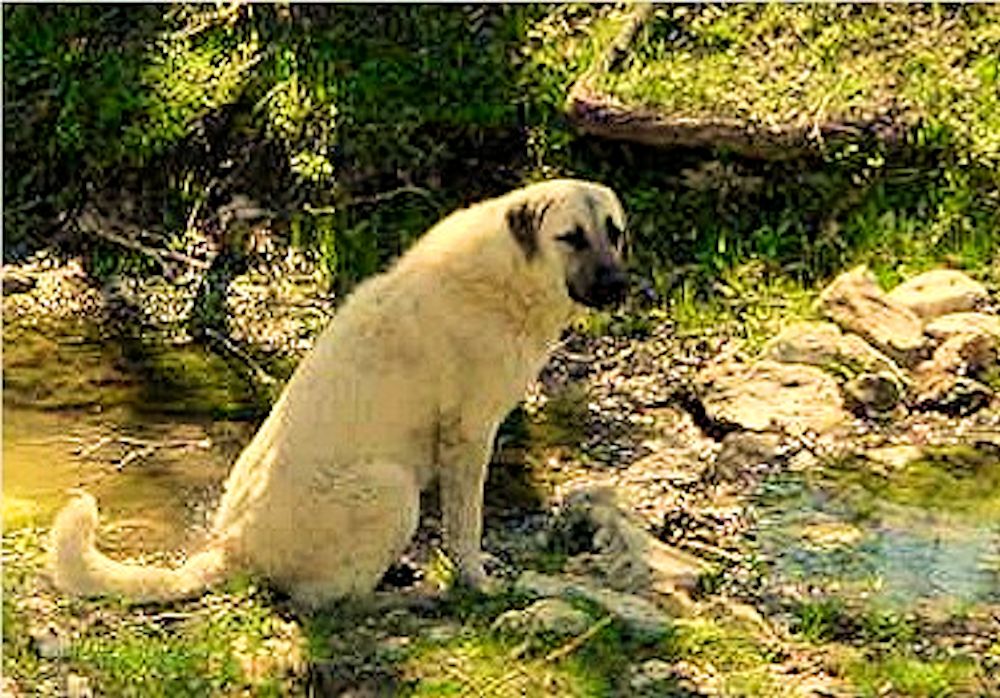
Case at eleven months on April 8, 2002.
Case loves guarding the big pasture.
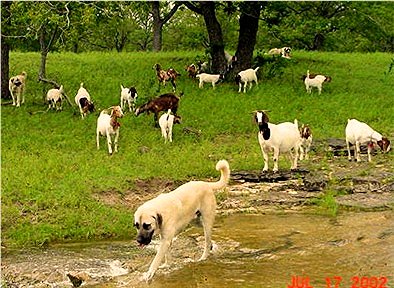
Case on July 17, 2002.
Case leading his goats across the creek and back to the barn.
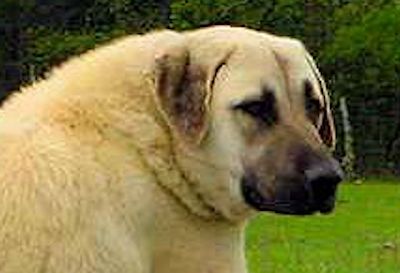
Case on April 7, 2002.
Case at eleven months already had the broad head, strong muzzle, and mane called for in the Anatolian Standard.
Case is a superior working Anatolian with a superior conformation.
Based on the quality of his progeny, Case is also a very prepotent Sire who passed his superior traits to his offspring.
|


 and Phone Numbers Link
and Phone Numbers Link


















































